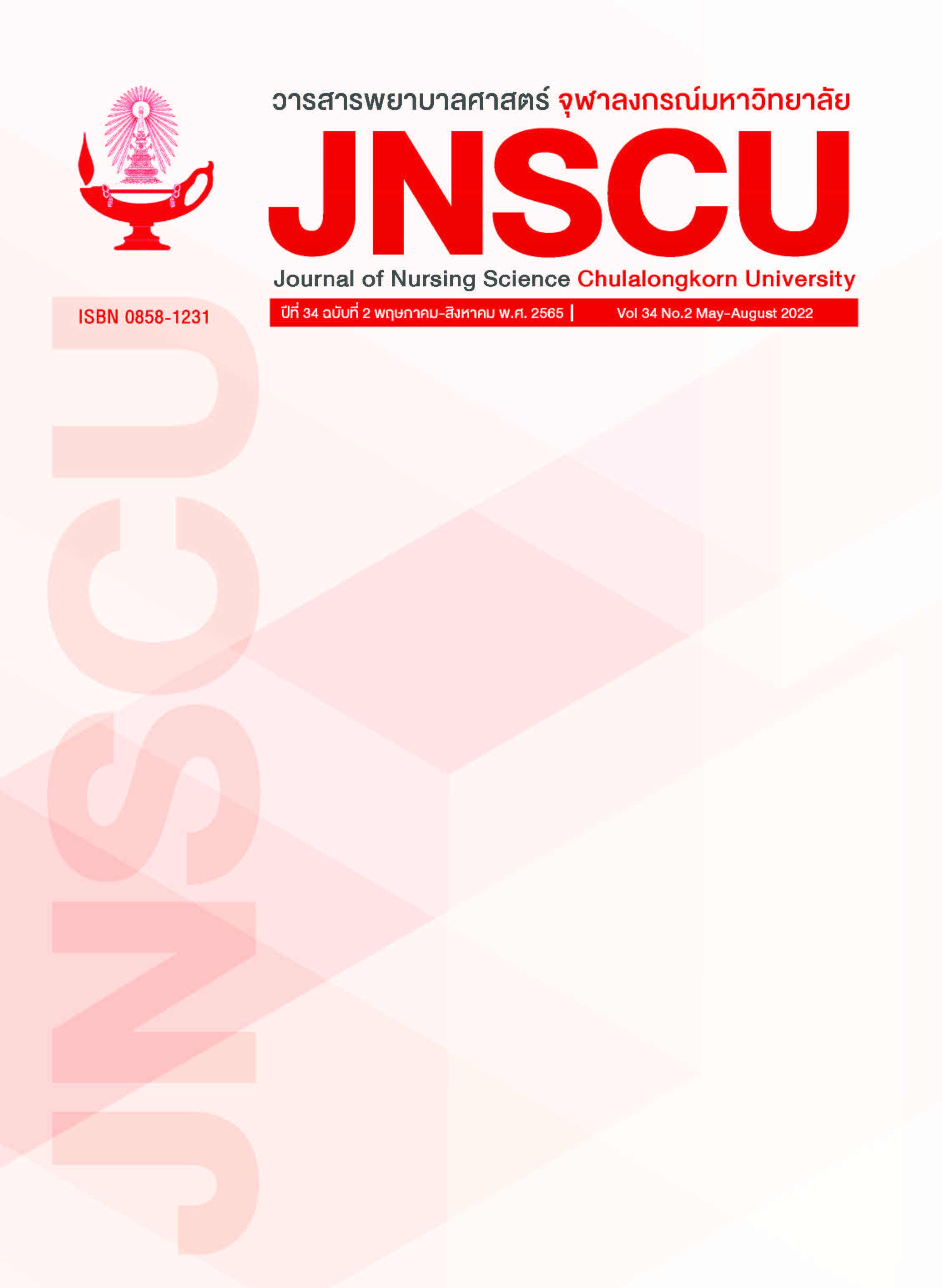ผลของโปรแกรมการดูแลวิถีพุทธต่อคุณภาพชีวิตด้านสุขภาพของผู้ป่วยมะเร็งท่อน้ำดีระยะลุกลาม
คำสำคัญ:
การดูแลวิถีพุทธ, คุณภาพชีวิตด้านสุขภาพ, ผู้ป่วยมะเร็งท่อน้ำดีระยะลุกลามบทคัดย่อ
วัตถุประสงค์: เพื่อเปรียบเทียบคุณภาพชีวิตด้านสุขภาพของผู้ป่วยมะเร็งท่อน้ำดีระยะลุกลามก่อนได้รับโปรแกรมการดูแลวิถีพุทธ, ระยะได้รับโปรแกรมฯ ขณะอยู่โรงพยาบาล, ระยะสิ้นสุดโปรแกรมฯ ขณะอยู่ที่บ้าน และระยะติดตามผลหลังสิ้นสุดโปรแกรมฯ ในสัปดาห์ที่ 6
รูปแบบการวิจัย: การวิจัยครั้งนี้เป็นวิจัยแบบ Quasi experimental with single-group time-series design ศึกษาในกลุ่มตัวอย่างเดียว ติดตามวัดผล 4 ครั้ง ในช่วงเวลาที่แตกต่างกัน
วิธีการดำเนินการวิจัย: กลุ่มตัวอย่างเป็นผู้ป่วยมะเร็งท่อน้ำดีระยะลุกลาม ที่นับถือศาสนาพุทธ อายุ 20 ปีขึ้นไป จำนวน 24 คน เครื่องมือวิจัย คือ แบบบันทึกข้อมูลส่วนบุคคล โปรแกรมการดูแลวิถีพุทธ แบบประเมิน Functional Assessment of Chronic Illness Therapy–Palliative Care (FACIT-Pal) ฉบับภาษาไทย และแบบประเมินการยอมรับความตายวิถีพุทธ (Buddhist Death Acceptance Scale) ที่มีค่าสัมประสิทธิ์แอลฟาครอนบาคเท่ากับ .94 และ .73 ตามลำดับ กลุ่มตัวอย่างได้รับการพยาบาลตามปกติ และโปรแกรมการดูแลวิถีพุทธในโรงพยาบาล และนำไปปฏิบัติต่อที่บ้าน วิเคราะห์ข้อมูลด้วยสถิติการวิเคราะห์ความแปรปรวนทางเดียวแบบวัดซ้ำ(One-way repeated ANOVA)
ผลการวิจัย: คะแนนเฉลี่ยคุณภาพชีวิตด้านสุขภาพโดยรวมของผู้ป่วยมะเร็งท่อน้ำดีระยะลุกลาม ระยะได้รับโปรแกรมฯขณะอยู่ในโรงพยาบาล และระยะสิ้นสุดโปรแกรมฯขณะอยู่ที่บ้าน มากกว่าก่อนได้รับโปรแกรมฯอย่างมีนัยสำคัญทางสถิติที่ .05 แต่คะแนนเฉลี่ยคุณภาพชีวิตด้านสุขภาพโดยรวมในระยะติดตามผลในสัปดาห์ที่ 6 กับระยะก่อนได้รับโปรแกรมฯ ไม่แตกต่างกัน ทั้งนี้มิติความผาสุกด้านจิตอารมณ์ในระยะติดตามผลในสัปดาห์ที่ 6 มากกว่าระยะก่อนได้รับโปรแกรมฯอย่างมีนัยสำคัญทางสถิติที่ .05
สรุป: โปรแกรมฯสามารถส่งเสริมคุณภาพชีวิตด้านสุขภาพของผู้ป่วยมะเร็งท่อน้ำดีระยะลุกลาม ทั้งในระยะได้รับโปรแกรมฯขณะอยู่ในโรงพยาบาล และระยะสิ้นสุดโปรแกรมฯขณะอยู่ที่บ้าน และโปรแกรมฯยังส่งผลให้ผู้ป่วยเกิดความผาสุกด้านจิตอารมณ์ในระยะติดตามผลได้
ดาวน์โหลด
เผยแพร่แล้ว
ฉบับ
ประเภทบทความ
สัญญาอนุญาต
ลิขสิทธิ์ (c) 2023 วารสารพยาบาลศาสตร์ จุฬาลงกรณ์มหาวิทยาลัย

อนุญาตภายใต้เงื่อนไข Creative Commons Attribution-NonCommercial-NoDerivatives 4.0 International License.
ลิขสิทธิ์ของบทความที่ตีพิมพ์เป็นของวารสารพยาบาลศาสตร์ จุฬาลงกรณ์มหาวิทยาลัย ทั้งฉบับตีพิมพ์เป็นรูปเล่มและเอกสารออนไลน์



